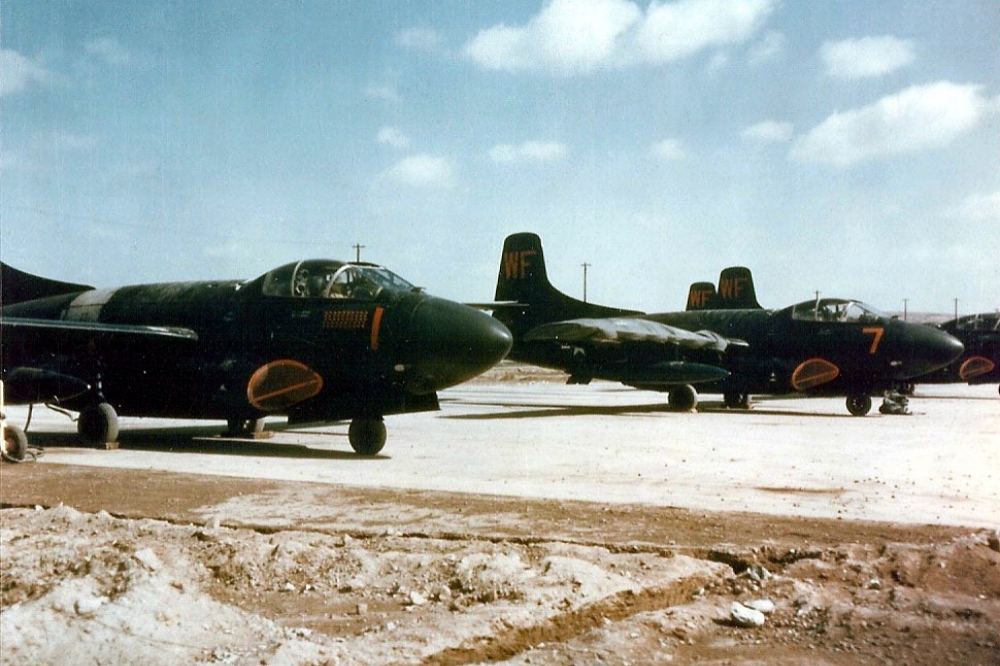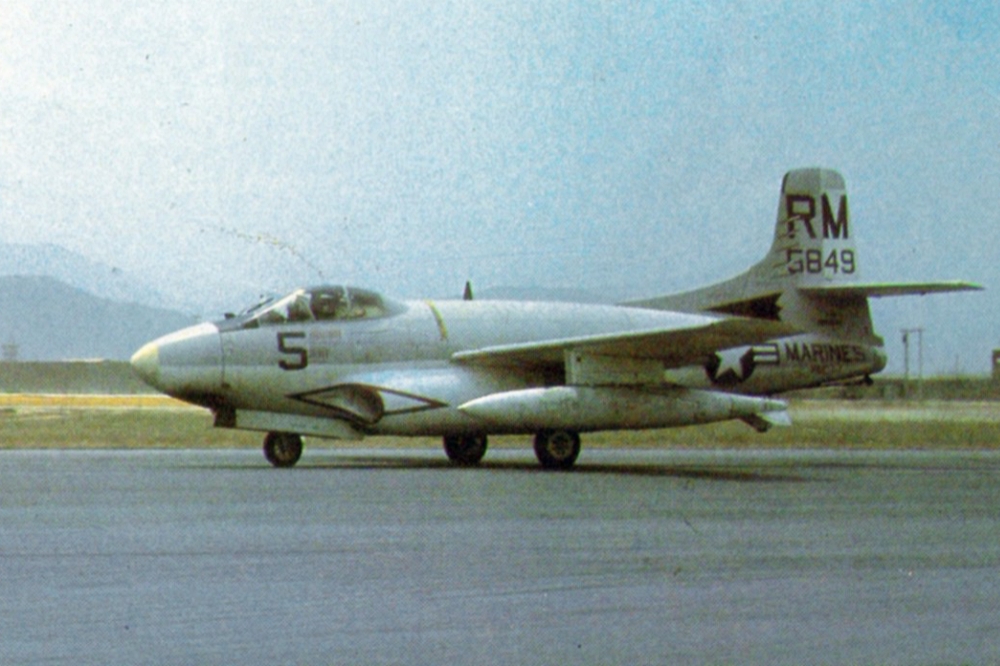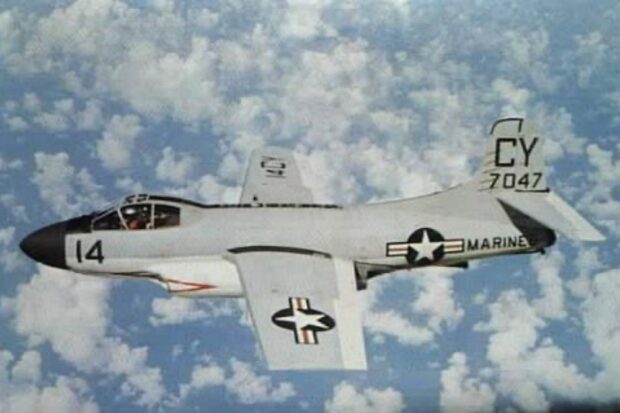In 1950, the Korean War’s skies turned hostile as Soviet MiG-15 fighters challenged the American B-29 bombers, once the unchallenged masters of the air. This new threat forced the USAF to halt their daylight bombing runs as the night skies became the new battleground. The Douglas F3D Skyknight entered this tense scenario, an unassuming figure against the backdrop of high-stakes air combat.
Often overlooked and lacking the sleek allure of its jet-powered contemporaries, this ‘sedan of the skies’ emerged as an unlikely hero in the heat of conflict.
The Douglas F3D Skyknight (later designated F-10 Skyknight) is an American twin-engined, mid-wing jet fighter aircraft designed and manufactured by the Douglas Aircraft Company.
It was designed in response to a 1945 United States Navy requirement for a jet-powered, radar-equipped, carrier-based night fighter. Douglas designed the aircraft around the bulky air intercept radar systems of the era, resulting in a wide, deep, and roomy fuselage that accommodated its two-man crew.
An initial contract was issued to Douglas on 3 April 1946. The XF3D-1 prototype performed its maiden flight on 23 March 1948. During June 1948, a production contract for 28 F3D-1 production aircraft was received. It was equipped with a Westinghouse AN/APQ-35 fire control system, which incorporated three separate radars and was an essential component of its night fighter operations.

Four Douglas F3D-2 Skyknight night fighters of Marine night fighter squadron VMF(N)-513 “Flying Nightmares” parked are parked on a flight line at Pyeongtaek, Korea (K-6), in 1952-53.
The F3D saw service with the United States Navy and United States Marine Corps. Its primary mission was to locate and destroy enemy aircraft at night. The Skyknight was not produced in great numbers, yet it achieved numerous firsts in its role as a night fighter during the Korean War, where the type frequently escorted Boeing B-29 Superfortresses on night bombing missions.
While it never achieved the fame of the North American F-86 Sabre, it downed several Soviet-built MiG-15s as a night fighter over Korea. It only sustained a single air-to-air loss against a Chinese MiG-15, which occurred on the night of 29 May 1953. A total of 237 F3D-2s were completed before production was terminated on 23 March 1952.
The Skyknight played an important role in the development of the radar-guided AIM-7 Sparrow missile, which led to further guided air-to-air missile developments. It also served as an electronic warfare platform in the Vietnam War as a precursor to the EA-6A Intruder and EA-6B Prowler.
The aircraft is sometimes unofficially called “Skynight”, dropping the second “k”. The unusual, portly profile earned it the nickname “Willie the Whale”. Some Vietnam War U.S. Marine veterans have referred to the Skyknight as “Drut”, whose meaning becomes obvious when read backwards. This may be in reference to its age, unflattering looks, or the low-slung air intakes that made it vulnerable to foreign object damage (FOD).

A U.S. Marine Corps Douglas EF-10B Skyknight (BuNo 125849) of Marine Composite Reconnaissance Squadron 1 (VMCJ-1) “Golden Hawks” landing at Da Nang, South Vietnam, in the second half of the 1960s
As the conflict intensified into the summer of 1952, the night skies, once a haven, became fraught with danger. In this new realm of shadowy warfare, the Skyknight began to carve out its niche. This underdog, quietly and effectively, started to make its mark, hinting at an impressive record that would challenge the expectations of friend and foe alike.
Top Photo: A Douglas EF-10B Skyknight (BuNo 127047) of Marine Composite reconnaissance Squadron 2 (VMCJ-2) “Playboys” in flight, circa in the 1960s. VMCJ-2 was commissioned on 1 December 1955 and began to fly electronic warfare missions off North Korea, China and the Soviet Union immediatley. In 1965 VMCJ-2 was deployed to Da Nang in South Vietnam with six aircraft. The Skyknights flew over 9000 sorties and lost five aircraft and twelve crewmembers. They were withdrawn from Da Nang in October 1969 and officially retired at MCAS El Toro (California, USA) on 31 May 1970.
Sources: Wikipedia; YouTube

